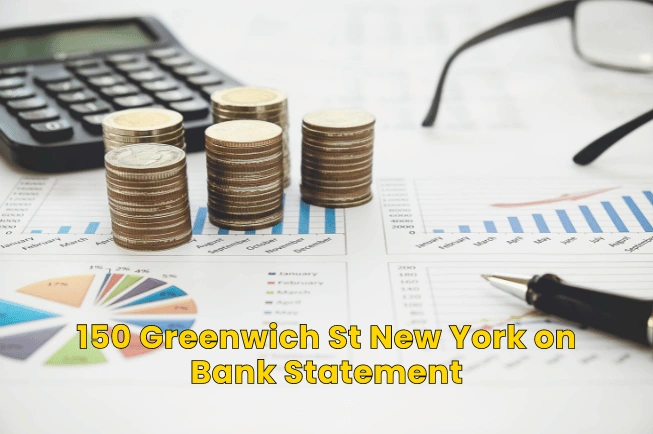
Have you lately been perplexed by a mysterious charge popping up on your bank statement? If “150 Greenwich St, New York,” you might have thought, “Who on earth is charging me for a Manhattan penthouse?”
There’s no need to worry though. Many users have come across this address on their bank statements without having a clue about what it means. In this post, we’ll discuss whether “150 Greenwich St, New York,” is a genuine payment or a fraudulent charge.
We’ll also share with you how to notice unauthorized charges, how to contact your bank to dispute them, and some preventative measures to protect your finances.
What Is 150 Greenwich St New York on Bank Statement?
“150 Greenwich St, New York, NY” is Spotify’s billing address. Many people have noticed this on their bank statements instead of seeing “Spotify.” A top music streaming service, Spotify lets users access millions of songs, podcasts, and audiobooks.
You can listen for free with ads or pay for a premium subscription to enjoy ad-free listening, offline playback, and higher-quality streaming. Here are Spotify Billing practices and statements:
- Spotify usually charges your payment method monthly, based on your subscription plan.
- You’ll get a statement (usually online) that shows charges for your account, either from Spotify or your payment processor.
- The statement will list billed amount, date, and possibly a reference number.
But what can confuse some users is when a “150 Greenwich St. New York, NY” bank charge appears on their bank statement. When your bank processes a Spotify payment, it gets details about transaction, including seller’s billing address.
Just In: How Does Apple Pay Show Up on Bank Statement?
Since Spotify uses this New York address, that’s what appears on your statement. If you also notice “150 Greenwich St, New York” on your bank statement here’s what you can do to verify it:
- Check if amount matches what you usually pay for your Spotify subscription.
- Look for other clues on your statement, like “NY” or “USA,” to see if it might be Spotify.
- Log in to your Spotify account and review your billing history to confirm charge.
- If you’re still unsure or don’t recognize payment, contact your bank to dispute it.
When to Dispute Spotify Charges?
Sometimes, you might need to dispute a charge on your Spotify statement. This is when you notice any of following issues:
- Unauthorized Charge – You never signed up for Spotify or didn’t authorize a charge.
- Double Billing – You’re being charged twice for same subscription period.
- Incorrect Amount – The charge amount doesn’t match your Spotify subscription plan.
- Subscription After Cancellation – You canceled your subscription but are still being charged.
Common Signs of Unauthorized Charges
Before you file a dispute, you must learn about signs of unauthorized charges that differentiate them from authorized ones. Here they are:
- You don’t recognize Spotify billing address (150 Greenwich St, New York) on your statement, and you haven’t used a VPN recently.
- The charge date is during a time when you were unlikely to use Spotify, like when traveling internationally.
- There is suspicious activity on your Spotify account, such as unfamiliar playlists or login attempts from unknown locations.
Contact Your Bank to Dispute an Unauthorized Charge
Once you’ve cleared your doubt and know for sure that a charge is unauthorized, here’s how to contact your bank to file a dispute:
- File a Dispute – Banks usually allow you to dispute charges through online banking, by phone, or in person at a branch. Choose a dispute method that works best for you.
- Provide Details – Give your bank information about disputed charge, such as date, amount, and merchant name (likely “Spotify” or “150 Greenwich St, New York”). Explain why you think a charge is unauthorized.
- Supply Documentation – If you have any evidence, like screenshots of your Spotify billing history or emails with Spotify support, share these with your bank.
Preventative Measures to Protect Your Spotify Account
Besides disputing unauthorized Spotify charges, you must also take some steps to protect your account and finances. Here’s how to do that:
- Regularly Monitor Account – Check your bank statements and Spotify billing history often to spot any discrepancies.
- Set Up Alerts – Enable transaction alerts from your bank so if there’s any suspicious activity you’ll get an immediate notification.
- Secure Your Spotify Account – Use a strong, unique password for Spotify and avoid using same password for other online services.
- Enable Two-Factor Authentication – Turn on two-factor authentication (2FA) for your Spotify account. This adds extra security by requiring a code from your phone or email, along with your password, when logging in.
Frequently Asked Questions
I see a charge from 150 Greenwich St, New York, but I don’t remember subscribing to Spotify. What should I do?
You or someone with access to your card details may have subscribed to Spotify. If you think the charge is fraudulent, contact your bank right away.
Why has the charge description changed from Spotify to 150 Greenwich St, New York?
Some users have noticed this change on their bank statements. The reason is unclear, but the charge is still for Spotify.
I canceled my Spotify subscription, but I still see a charge from 150 Greenwich St, New York. Why?
The cancellation might not have been processed correctly, or the charge could be for a different period. To know for sure, contact Spotify’s customer support for help.
Conclusion
Coming across “150 Greenwich St, New York” on bank statement can be confusing. But we’ve discussed how it’s actually related to your Spotify subscription. However, if you don’t have a subscription, check for signs of unauthorized charges, and reach out to your bank to dispute any unfamiliar transactions. You must also implement some preventive measures to safeguard your finances for the future.
